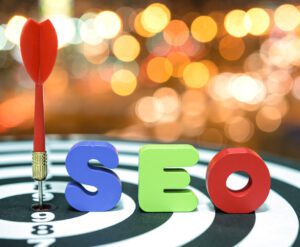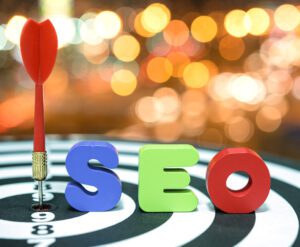In today’s fast-paced digital landscape, businesses constantly seek effective ways to connect with their target audience and drive measurable results. Performance marketing is a dynamic and results-oriented approach to marketing that can deliver impressive returns when executed effectively. This strategy allows advertisers and businesses to reach their target audience and generate measurable results. In performance marketing, you only pay when the providers of 360-degree digital marketing services and solutions generate desired results regarding impressions, shares, clicks, conversions, leads, and sales.
In an era where data and measurement reign supreme, performance marketing offers a path to marketing success that aligns with the modern consumer’s demand for relevance and value. Embrace this comprehensive guide to performance marketing and watch your business thrive in the digital age. By understanding its key components, e.g., setting clear goals, targeting the right audience, choosing the appropriate channels, and continuously optimizing your campaigns, you can harness the power of performance marketing to achieve your business objectives.
This comprehensive guide will delve into the essentials of performance marketing, providing a clear understanding of what it is, how it works, and how to harness its potential for your business.
Understanding Performance Marketing
Performance marketing is a results-driven marketing approach that focuses on achieving specific, measurable outcomes, qualified leads, and customer value creation. Unlike traditional advertising, where brands pay for exposure without clear ROI, performance marketing aims to deliver tangible results such as leads, sales, clicks, or other desired actions. It’s about allocating marketing budgets strategically to maximize return on investment (ROI).
Paid marketing channels such as native advertising, search engines, and sponsored advertising are commonly used for performance marketing strategies. Performance marketing is unique because it’s a 100% results-driven strategy. Advertisers don’t pay for an ad upfront. They pay based on the success of the ad.
Critical Components of Performance Marketing
Pay-Per-Click (PPC) Advertising
PPC advertising is a cornerstone of performance marketing. Advertisers only pay when users click on their ad, making it a cost-effective way to drive targeted traffic to a website or landing page. Popular platforms for PPC advertising include Google Ads and Facebook Ads.
Affiliate Marketing
Affiliate marketing involves partnering with affiliates or publishers who promote your products or services. It’s a process of driving sales to the business or products, and a marketer only gets paid after the final conversion. This model ensures that you only spend money when you see results. For example, Social Media Influencers promote products on their platform and only get paid if customers buy them.
Search Engine Optimization (SEO)
SEO is optimizing your website to rank higher in search engine results pages (SERPs). Organic search traffic driven by SEO can be a valuable source of high-quality leads. SEO is the process of obtaining high rankings in the Google Search Engine through strategized, high-quality link building and content marketing over the internet.
Social Media Advertising
Platforms like Facebook, Instagram, and LinkedIn offer robust advertising options. Performance marketers can target specific demographics, interests, and behaviors, ensuring their ads reach the most relevant audiences.
Email Marketing
Email marketing is a versatile tool in performance marketing. It allows businesses to nurture leads, promote products, and build brand loyalty. Segmenting your email list and delivering personalized, engaging content is critical.
Setting Clear Goals
Before launching any performance marketing campaign, defining clear and measurable objectives is crucial. These goals will guide your strategy and help you assess the effectiveness of your efforts. Common performance marketing goals include:
- Increasing website traffic
- Generating leads or inquiries
- Boosting sales or conversions
- Improving click-through rates (CTR)
- Enhancing brand awareness
Targeting the Right Audience
One of the strengths of performance marketing is its ability to reach particular audiences. To achieve this, you need to understand your ideal customers thoroughly. Create detailed buyer personas, including demographics, interests, online behavior, and pain points. This information will enable you to craft tailored messages and select the most appropriate advertising channels.
Choosing the Right Channels
Not all marketing channels are created equal, and not all are suitable for every business. Choosing the proper channels depends on your target audience and goals. Consider the platform’s user base, ad formats, and targeting capabilities. A B2B software company, for instance, might find success with LinkedIn ads, while a fashion retailer may prefer Instagram.
Creating Compelling Content
In performance marketing, content is king. Whether it’s ad copy, blog posts, videos, or social media updates, your content must resonate with your audience and compel them to act. Use persuasive language, visuals, and storytelling to engage your audience and drive desired outcomes.
Optimizing Campaigns for Success
Optimization is an ongoing process in performance marketing. After launching a campaign, monitor its performance closely. Make data-driven adjustments to improve results. Common areas to optimize include:
- Ad creativity and messaging
- Keyword targeting (for PPC campaigns)
- Landing page design and usability
- Bidding strategies
- Ad scheduling
Measuring and Analyzing Performance
Performance marketing is data-driven, so you must rely on metrics and analytics to gauge your success. Common key performance indicators (KPIs) to track include:
- Return on ad spend (ROAS)
- Click-through rate (CTR)
- Conversion rate
- Cost per click (CPC)
- Customer acquisition cost (CAC)
- Customer lifetime value (CLV)
Utilize analytics tools like Google Analytics, Facebook Insights, or specialized marketing platforms to track and analyze these metrics. Regularly review your data to make informed decisions and identify areas for improvement.
Continuous Improvement and Adaptation
The digital landscape is dynamic, and what works today may not work tomorrow. To stay competitive in performance marketing, embracing a culture of continuous improvement is essential. Test new strategies, explore emerging platforms, and adapt to consumer behavior and technology changes.
The Benefits of Performance Marketing
With the digital marketing industry growing by the year, performance marketing has enormous potential to scale your business when you embrace its full functionality. Here are some key benefits of performance marketing:
Measurable Results:
Performance marketing relies on precise metrics and Key Performance Indicators (KPIs) to assess the success of campaigns. This level of transparency allows businesses to track and measure their marketing efforts accurately. Using advanced analytics and tools, you can efficiently track, monitor, measure, and optimize your performance marketing campaigns. You can also analyze your campaign’s success and what adjustments you need to make in the ads to perform better.
Cost-Effective:
Unlike traditional marketing methods that require significant upfront investments, performance marketing operates on a pay-as-you-go model. Advertisers only pay when specific actions are taken, such as clicks, leads, or sales. This cost-efficiency ensures that marketing budgets are utilized effectively, with a clear correlation between spending and outcomes.
Targeted Advertising:
Performance marketing enables businesses to pinpoint their audience with precision. Marketers can create highly personalized and relevant ad campaigns by leveraging data and user behavior insights. This targeted approach increases the likelihood of reaching potential customers who are genuinely interested in the product or service offered.
Flexibility and Optimization:
Performance marketing campaigns can be easily adjusted and optimized in real-time based on data and performance trends. This flexibility allows businesses to respond swiftly to changing market conditions, ensuring their marketing efforts remain relevant and practical.
Global Reach:
With the internet’s vast reach, performance marketing allows businesses to expand their reach beyond local boundaries. This mainly benefits e-commerce companies and businesses looking to tap into international markets. Performance marketing can help them reach a global audience with tailored campaigns.
Enhanced ROI:
Due to its data-driven nature, performance marketing offers a higher potential for a positive return on investment. Businesses can maximize their ROI over time by continuously analyzing data and refining strategies. This makes it an attractive choice for businesses of all sizes, from startups to established corporations.
Improved Accountability:
Performance marketing holds advertisers and marketers accountable for their campaigns’ outcomes. With clear metrics and results, businesses can assess which strategies deliver the best results and make informed decisions for future campaigns. This accountability fosters a culture of continuous improvement.
Better Customer Insights:
Performance marketing generates valuable customer data and insights. Businesses can gain a deeper understanding of their audience by analyzing user behavior, preferences, and engagement patterns. This information can be used to refine marketing strategies and tailor products or services to meet customer needs.
Brand awareness:
You can reach new audiences through affiliates and agencies with their own established audiences and increase traffic to your site.
Lower risk:
Businesses know what they will achieve with a specific performance marketing campaign and how much they must pay. Hence, they pay for only the results achieved. This eliminates business risk and helps them achieve brand goals quickly.








